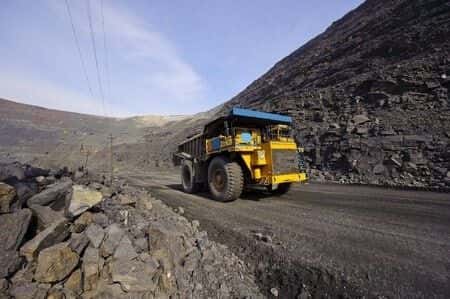Background
This litigation involved the alleged unlawful dumping of toxic industrial waste (“Coal Ash Waste” or “Waste”) in the Dominican Republic by The AES Corporation (“AES”) and four of its subsidiaries. Plaintiffs, residents of the Dominican Republic, alleged they were wrongfully exposed to reproductive, carcinogenic, and other toxins in the Coal Ash Waste, either directly or in utero, and as a result suffered severe personal injuries, including birth defects and death. These birth defects included conjoined twins, missing limbs, missing organs, internal organs extruding from the body, cranial and bony malformations, central nervous system injuries, and gastrointestinal deformities.
Expert Witness
Serving as an expert witness on behalf of the Plaintiffs was William Konicki. Mr. Konicki is a licensed Civil Engineer with over forty years of experience in civil, structural, and foundation engineering. Konicki specializes in geotechnical engineering, which includes field and laboratory soil classification, soil chemistry,geophysics, selection of soil engineering properties, methods of field and laboratory testing to determine soil engineering properties, and applying soil engineering properties to the design of roadways, embankments, and foundations of structures.
Konicki is currently the Senior Principal at an engineering consulting firm. In this position, he routinely analyzes the particle size and particle distribution of soils in both non-litigation and litigation work.
Looking for an expert in civil engineering? Click here to begin a search for the perfect expert.
Plaintiffs were seeking to prove through Konicki that the Coal Ash Waste dumped at Arroyo Barril contained particles (silt) capable of becoming airborne and respirable. At Plaintiffs’ request, Konicki evaluated the physical and chemical properties of the raw material used in the production of the Coal Ash Waste and the physical and engineering properties of the Waste, and performed a particle size distribution analysis to determine how environmental conditions and mechanical erosion affected the properties of the material.
Konicki determined that the Defendants’ Coal Ash Waste was not physically or chemically durable when exposed to routine environmental conditions (such as rain, sun, and wind), or when subjected to routine mechanical erosion (from storage, loading, transportation, and unloading). According to Konicki, the Coal Ash Waste had a variable composition, and gypsum, the primary bonding agent for the Waste, was partially soluble in fresh water and more soluble in seawater. Konicki opined that the variable composition of the Coal Ash Waste and weakened gypsum bonds from weathering and mechanical erosion reduced and changed the particle size distribution of the Waste (increasing the silt content), and therefore, the Waste was capable of easily becoming airborne.
Daubert Challenge
Defendants sought to exclude the opinion lined out above. They that Konicki: (1) lacked the requisite qualifications; and (2) relied on laboratory test results about the particle size distribution of Coal Ash Waste that employed the incorrect testing methodology.
Conclusion
In responding to the challenge of Konicki’s qualifications as an expert, the Court found that Defendants’ claim was not persuasive. Defendants argued that Konicki’s opinion about the reduced particle size distribution was premised on physical chemistry and breakdown of chemical bonds, but Konicki was not a chemist, was not qualified to testify about chemistry, and was inappropriately serving as a “mouth piece” for his staff chemist.
The Court noted that it is well established that as long as a proper foundation is laid, an expert may base his or her opinion on data or facts from another expert. Konicki had over forty years of experience and expertise in civil, structural, and foundation engineering. Through this experience, Konicki had developed an understanding of chemistry as it relates to his expertise in civil engineering, and in this case, Konicki researched the typical chemical properties of fly ash, bottom ash, and the effect of water on the stability of gypsum. In addition to relying on his own research, experience, expertise, education, and training, as a project manager, Konicki collaborated with his staff assistants to evaluate the issues related to chemistry, bonding, and weathering associated with Coal Ash Waste. Konicki testified that it was a standard engineering practice for a senior engineer to oversee and interpret staff assistants’ analyses and testing results to formulate an engineering opinion and conclusion.
Based on Konicki’s research, experience, expertise, education, and training as a civil engineer, the Court found Konicki was qualified to opine about the reduced particle size distribution of Coal Ash Waste, and Konicki was allowed rely upon and interpret his staff assistants’ analyses and testing results to formulate his own expert opinion.
In responding to the challenge of Konicki’s methodology, the Court was also unpersuaded by the Defendants’ arguments. Although Konicki was unable to test the actual material dumped at Arroyo Barril, he did, however, consider two available particle size distribution test results of Coal Ash Waste from AES Puerto Rico—the 2004 Little Test and the 2005 Rivera Test. The Little Test indicated silt levels of 1.92% and the Rivera Test indicated silt levels of 35.55% and 28.6%. After thoroughly evaluating both, Konicki concluded that the Rivera Test is more reliable.
Both the Rivera Test and Little Test utilized testing methods according to the standard procedures described by the American Society for Testing and Materials (ASTM). The Rivera Test followed the Standard Test Method for Particle-Size Analysis of Soils (ASTM D422) and the Little Test employed the Standard Method of Test for Sieve Analysis of Fine and Coarse Aggregates (ASTM C136).
Defendants contended Konicki’s opinion that the Coal Ash Waste dumped at Arroyo Barril contained fine particle content or high silt content was not reliable because he did not test the actual material at Arroyo Barril, and the Rivera Test employed the incorrect methodology for testing the type of material at Arroyo Barril. According to Defendants, the Little Test properly utilized the ASTM C136 methodology, which is specified for determining the dusting potential of aggregate storage piles. In contrast, the Rivera Test employed the ASTM D422 methodology, which is used to analyze the particle size of a soil sample for purposes of determining its engineering properties, rather than assessing its dusting potential.
The Court was unpersuaded by this argument, noting that Daubert neither requires nor empowers trial courts to determine which of several competing scientific theories has the best performance, but rather demands only that the proponent of the evidence show that the expert’s conclusion has been arrived at in a sound and methodologically reliable manner.
According to Konicki, he relied upon the Rivera Test instead of the Little Test because: (1) the material tested in the Little Test was not representative of the weathered and degraded material in Arroyo Barril; and (2) the Rivera Test testing methodology was more appropriate for determining the silt content of Coal Ash Waste at Arroyo Barril because it mimics the effects of weathering and mechanical degradation.
Therefore, the Court found that Konicki’s proffered testimony was based upon sufficient facts and data, was the product of reliable principles and methods, and Konicki had applied those principles and methods reliably to the facts of this case.
In sum, the Court found Konicki was qualified by knowledge, skill experience, training, and education to opine about the particle size distribution of the Coal Ash Waste; his opinion was relevant; his opinion was based upon information reasonably relied upon by experts in the particular field; his testimony would assist the trier of fact to understand the evidence or to determine a fact in issue; and the testimony would not create unfair prejudice or confuse or mislead the jury. For the foregoing reasons the Court denied Defendant’s Motion to Exclude the Testimony of Mr. Konicki.
About the author
Jared Firestone, J.D.
Jared Firestone, J.D., is a multi-disciplinary attorney with expertise in a range of legal areas. He founded and operated Firestone Law Firm PA in Hollywood, Florida, and worked as an Associate Attorney at Gustman Law P.C. in New York. His practice areas include Personal Injury, Criminal Defense, Medical Malpractice, Trusts & Wills, Civil and Commercial Litigation, Family Law, Real Estate, and Immigration. Additionally, he has experience in real estate, focusing on residential property in the Miami/Fort Lauderdale areas. Firestone also served as a pro bono Mediator at the Benjamin N. Cardozo School of Law Divorce Mediation Clinic. He holds a J.D. from Cardozo School of Law, where he honed skills in E-Discovery, Divorce Mediation, and Legal Writing, and a Bachelor’s degree in Philosophy from Tulane University.



